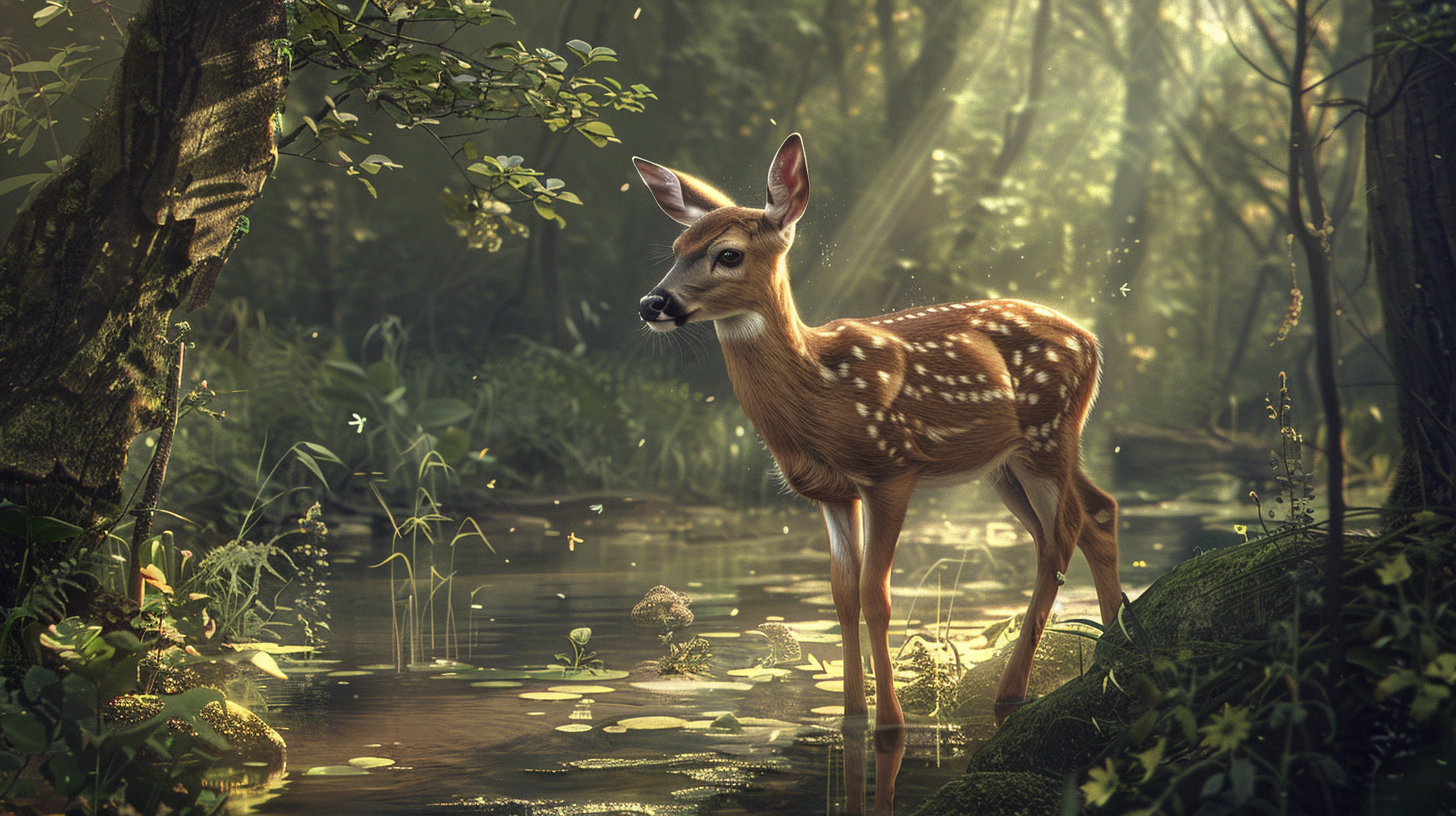White-Tailed Deer
The White-Tailed Deer is a graceful and agile herbivore native to Terra, renowned for its distinctive white tail that it raises as a warning signal when alarmed. It possesses a slender yet sturdy build, with a coat that varies in color from reddish-brown to grayish-brown, often blending with its surroundings for camouflage. Both males, known as bucks, and females, known as does, bear antlers, though those of the bucks are typically larger and more branched. White-Tailed Deer are known for their speed and agility, making them adept at navigating various terrains for food and shelter.
Basic Information
Ecology and Habitats
The White-Tailed Deer inhabits various habitats across Terra, including forests, woodlands, grasslands, and brushy areas. It prefers areas with diverse vegetation, ample cover for hiding and foraging, and access to water sources for drinking. Although white-tailed Deer are adaptable to different environments, they thrive in landscapes with a mixture of open spaces and dense vegetation, which provides both food and shelter.
Additional Information
Domestication
The domestication of White-Tailed Deer in Terra has not been widely practiced. Unlike other animals that have been selectively bred and raised in captivity for various purposes, White-Tailed Deer remain primarily wild and untamed by human influence. Their large size, strong instincts, and specific habitat requirements make them challenging candidates for domestication. While some efforts may have been made in certain regions, they have not led to widespread domestication or significant utilization beyond occasional human interactions in captive settings.
Uses, Products & Exploitation
White-tailed deer serve several purposes. Primarily, they are hunted for their meat, providing a valuable sustenance source for communities across various regions. Their hides and antlers are also utilized for crafting various items, including clothing, tools, and decorative ornaments.




Comments